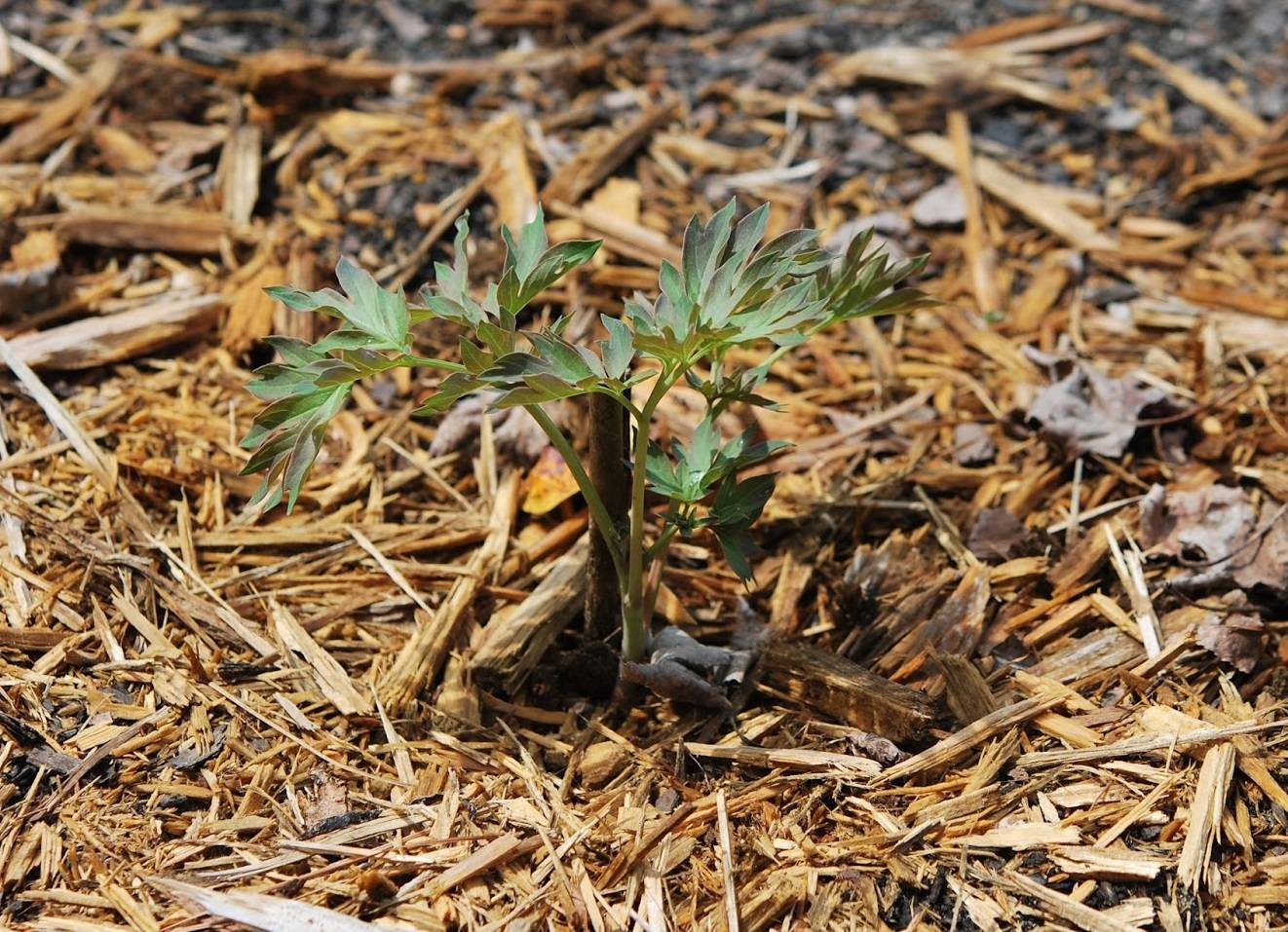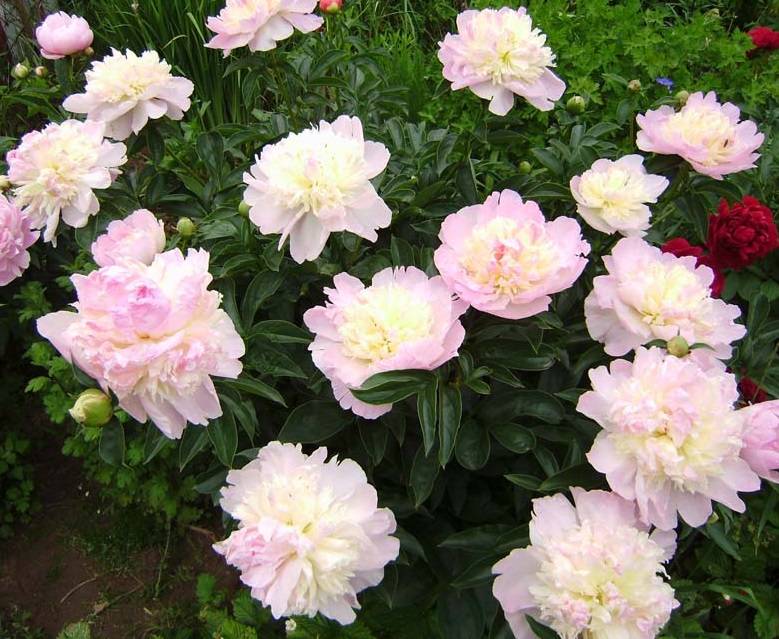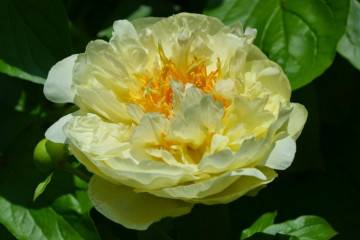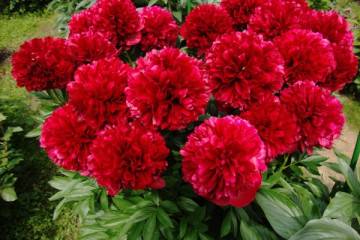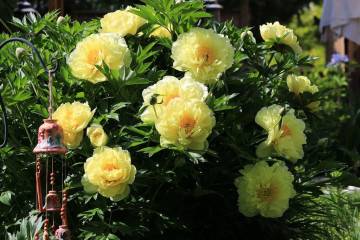Peony Raspberry Sunday (Paeonia Raspberry Sundae)
Content:
There are many varieties of herbaceous peonies. These include the milky-flowered variety Raspberry Sunday, which is remembered for its large flowers of unusual colors. Taking care of him is not so difficult if you know the basic rules for growing a flower.
Peony Raspberry Sunday: description and characteristics
Raspberry Sunday or Paeonia Raspberry Sundae was developed in the American peony nursery Klehm in 1968. The plant forms a bush 75-80 cm high. Its stems are quite strong, covered with medium-sized dark green leaves with a glossy sheen. The buds, when fully opened, reach 18 cm in diameter. On wide pale pink petals along the outer edge there are smaller yellowish-cream ones, crowned on top with a terry bright pink tuft. The flowers exude a characteristic pleasant scent similar to that of roses.
Peony Raspberry Sunday is used by landscape designers in the form of single bushes against the background of an emerald lawn, as well as in alpine slides and various garden compositions near recreation areas, houses or gazebos.
How to properly plant and grow a flower in the open field
The herbaceous peony Raspberry Sundae is unpretentious to growing conditions. How well it will take root after planting and how soon it will begin to bloom largely depends on the correctness of the procedure.
Planting by root cuttings
Root division or root grafting is the most common method for propagating peonies. The procedure is quite simple and comes down to the separation of sprouts with single buds and their own roots from the root system of the mother bush.
What time is the boarding
The cuttings separation procedure is carried out at the very end of August or at the beginning of September. Later dates are undesirable, since the plant will not have time to adapt in a new place and may die from the first frosts. In the spring, the buds are actively growing, so the spring transplant will greatly harm the mother bush.
Location selection
For the thermophilic peony Raspberry Sandai, it is advisable to choose a sunny area with well-drained soil. The acidity index of the soil at the planting site should be neutral.
How to prepare the soil and flower for planting
If the soil in the chosen place is not loose and light enough, then river sand is added to it. To saturate the soil with nutrients, it is recommended to add peat or humus. In the transplanted cut, the aerial part is almost completely cut off, the root cuts are dipped in wood ash.
Planting procedure step by step
Planting Raspberry Sunday is carried out in accordance with the rules that are relevant for all herbaceous peonies. It is necessary to act as follows:
- Dig a hole 2 bayonets deep and 50-60cm wide.
- Drain the bottom well with fine gravel.
- Fill the hole with a fertile soil mixture consisting of an equal amount of peat, humus, turf soil and sand.
- In the center of the filled hole, make a small hole with your hands, in the center of which place the root cutting.
- Sprinkle the roots of the cutting with earth and compact it with your hands. In this case, it is important that the kidneys do not rise above the soil level above 3 cm.
After planting is complete, the bush is carefully watered and the space around it is mulched with sawdust.
Seed planting
Sowing peonies with seeds is a rather troublesome business, since the seed has a low percentage of germination. It will be possible to evaluate the result only after 5 years, when the new plant comes into force and begins to bloom fully. This method of reproduction is resorted to for the purpose of selection.
Plant care
Peony care activities include the usual treatments for flowering horticultural crops. Raspberry bushes need to be watered and fed regularly, and the soil under them should be loosened.
Watering and feeding
In the spring, peonies are fed with urea or ammonium nitrate with the addition of nitroammophoska. In the fall, complex mineral compositions that do not contain nitrogen are introduced under the bush.
The soil under an adult bush is moistened as the soil dries out. At the end of May, when it is time for flowering, and in August, when flower buds are laid, the plant should receive enough water (15-20 liters once a week).
Mulching and loosening
The peony bush must necessarily have a trunk circle. No other plants are planted inside this space, weeds are removed regularly.
In spring, it is recommended to mulch peonies with horse manure, but not with leaves or straw. If fungal diseases are found, any organic mulch should be removed.
Preventive treatment
The scent of Raspberry Sunday flowers and the nectar protruding on them attract many parasitic insects to the plant. To protect the bush, in the spring, you can treat the flower with a fungicidal preparation (Fitosporin-M, Maxim, a weak solution of potassium permanganate) and shed the earth in the near-stem circle with Bordeaux liquid.
Peony Blossom Raspberry Sandy
The cultivar in question, like most other herbaceous peonies, blooms annually. It is characterized by a rather long flowering in comparison with other varieties.
A period of activity and rest
The exact timing of flowering depends on the growing region and weather conditions. In temperate latitudes, the buds bloom within 3-4 weeks, starting in late June.
Care during and after flowering
Withered and crumbling inflorescences should be promptly removed from the peony bush. In this case, it is important not to touch the leaves, then the lateral buds can develop in full force.
It is not recommended to cut off a lot of leaves from a bush for decorating bouquets. The number and quality of flowers next year directly depends on the health and abundance of greenery in the current summer.
What to do if it does not bloom, possible reasons
There are several common reasons why peonies do not bloom, including the Raspberry cultivar. These factors include:
- insufficient lighting;
- increased acidity of the soil;
- long stay in one place and the need to rejuvenate the bush;
- incorrect pruning of shoots;
- lack of adequate nutrition;
- the presence of diseases or pests.
In most cases, the problem is solved by transplanting the plant to a new, more suitable place, as well as by adjusting the care measures.
Peonies after flowering
After flowering is complete, the Raspberry Sunday bush must have time to recuperate and prepare for winter. During this period, renewal buds are laid on the rhizome, from which young stems will later germinate.
Transfer
Peonies are usually transplanted in August or September, but not in spring.If there is a need to transplant the plant at other times, it is important that it is not in the flowering stage. When digging a bush, a number of rules should be observed:
- the procedure is carried out in dry and warm weather;
- the bush is removed from the soil with a root ball, stepping back 20 cm from the stems and sticking a shovel strictly vertically;
- the bush cannot be pulled out of the ground by holding the leaves;
- it is recommended to pre-cut the leaves from the bush to a stem height of 15-20 cm.
In a new place, Peony Raspberry Sandae adapts within 2-3 years and only after that begins to show varietal qualities to the fullest.
Pruning
Pruning of peony bushes is carried out in late autumn with the onset of the first frost. Later carrying out the procedure threatens with rotting of the roots and the death of the plant.
Preparing for winter
The Raspberry variety tolerates frosts quite well, but it is still recommended to cover the cut stems of the bush before the cold weather. Also, the bush can be mulched to a height of 20 cm with humus.
Diseases, pests and ways to control them
Some flower diseases are characteristic of the variety in question. The most common are:
- gray rot;
- rust;
- ring mosaic.
To get rid of them, use the appropriate fungicidal preparations strictly according to the attached instructions.
Of insects, the peony is annoyed by bronzes, aphids, ants and thrips. You can protect yourself from them with various folk remedies and insecticidal preparations.
Lush flowers Raspberry Sunday, painted in the most delicate creamy pink shades, will decorate any corner of the garden. Having familiarized yourself with the agricultural technology of growing these peonies, you can easily grow a luxurious bush on your site.

